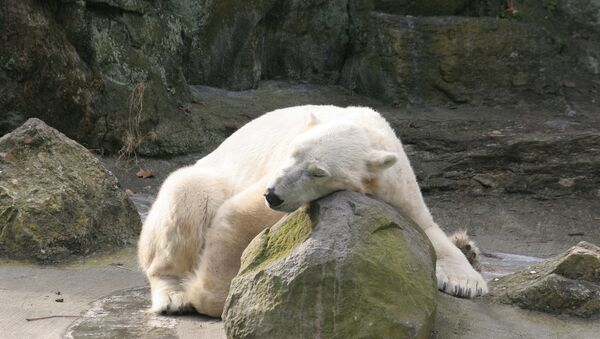The video posted on Tuesday on Facebook by National Geographic photographer Paul Nicklen following the SeaLegacy environmentalists’ trip to Baffin Island, Canada, has now enjoyed over 1,100,000 views. The photographer said in comments to the video the entire team "was pushing through tears" as they were documenting a dying bear, with what looks like severe muscular atrophy, moving slowly across the barren land in a vain search for food.
WARNING: The following video is graphic and may offend sensibilities
"No energy. It’s a slow, painful death. When scientists say polar bears will be extinct in the next 100 years, I think of the global population of 25,000 bears dying in this manner. There is no band aid solution."
In the days since Nicklen posted the footage, he's been asked why he didn’t intervene.
"Of course, that crossed my mind," said Nicklen. "But it's not like I walk around with a tranquilizer gun or 400 pounds of seal meat."
Nicklen claim it wrong to think there could be separate, one-off measures to change the situation for the better:
"There was no saving this individual bear. People think that we can put platforms in the ocean or we can feed the odd starving bear."
This is a video by Paul Nicklen showing a polar bear starving to death in front of his eyes 😿 I recommend everyone watch it to see what we are doing to Planet Earth https://t.co/1AvDavqFi2
— Niki Rust (@NikiRust) 7 декабря 2017 г.
#ClimateChange, y'all. "When scientists say bears are going extinct, I want people to realize what it looks like."… "By telling the story of one polar bear, Nicklen hopes to convey a larger message about how a warming climate has deadly consequences." https://t.co/UhX0h1t8In
— alison grass (@alison_grass) 8 декабря 2017 г.
By telling the story of just one animal the photographer is attempting to convey the global message which has an immediate effect, likewise the long-term impact on wildlife, is climate change. The simple truth is, he said, that the Earth continuing to warm may soon bring about the extinction of whole polar ecosystems.
Meanwhile, comments posted below the video on YouTube suggest a population boom in the far northern regions is to blame, with commercial fishing and industrial activity thriving at unprecedented levels. Strictly speaking, the two arguments, as ecology experts say, are well linked to each other and must be both taken into account. This is what Cristina Mittermeier, co-founder of SeaLegacy, has shared in her Instagram:
To this end, as many as nine countries – the US, Canada, Russia, Norway, Greenland/Denmark, China, Japan, Iceland, South Korea, and the European Union (which includes 28 member states)—agreed last week to suspend commercial fishing in the high seas of the Arctic Ocean for at least 16 years while scientists study the potential impacts on wildlife in the far north. This is a historic moment indeed, a rare occasion that sees such a staggering number of nations raise concerns about the future.
READ MORE: Kola Wind Park to Reportedly Provide Energy to Half of Russian Northern Port

